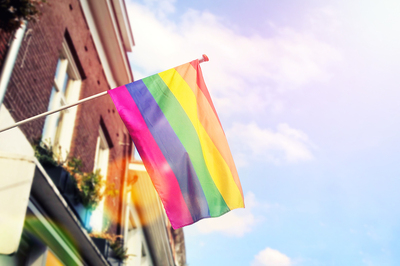
While progress is being made in terms of LGBTQ acceptance, there’s more work to be done to correct health disparities due to discrimination.
LGBTQ people face a number of health issues stemming from “societal stigma, discrimination, and denial of their civil and human rights,” according to the Office of Disease Prevention and Health Promotion (ODPHP).
The good news? Research is underway aimed at correcting the disparity, although experts are still calling for more nationally-representative health-related surveys. Here’s a closer look at why LGBTQ health matters, what data is currently being collected, and what continuing issues need to be addressed moving forward.
Why LGBTQ Health Matters
“Eliminating LGBT health disparities and enhancing efforts to improve LGBT health are necessary to ensure that LGBT individuals can lead long, healthy lives,” says ODPHP.
Specifically, identifying and addressing health issues can lead to a number of benefits, including reducing disease transmission and progression, increasing mental and physical well-being, reducing healthcare costs, and increasing longevity.
Improving Understanding of LGBTQ Health
Sexual orientation data was collected by six national data systems over the past decade. These included the Behavioral Risk Factor Surveillance Survey (BRFSS), the National Health and Nutrition and Examination Survey (NHANES), the National Survey of Family Growth (NSFG), the Youth Risk Behavior Survey (YRBS), the National Crime Victimization Survey (NCVS), and the American Community Survey (ACS).
Additionally, two additional surveys have commenced during this time period: the National Health Interview Survey (NHIS) and the National Survey of Drug Use and Health (NSDUH).
The hope is that these surveys can help mitigate health disparities among the LGBTQ population in a number of ways, including;
- Identifying disparities
- Enhancing patient interaction and care
- Helping medical students provide culturally competent care
- Implementing anti-bullying policies in schools
- Providing supportive social services aimed at reducing homelessness and suicide
- Reducing HIV and other sexually transmitted diseases through strategic interventions
This begs the question: what, specifically, are these health disparities? Eye-opening statistics reveal that:
- LGBT youth are two to three times more likely to attempt suicide.
- They’re more likely to be homeless.
- They have the highest rates of cigarette, drug, and alcohol use.
Explains the ODPHP, “Understanding LGBT health starts with understanding the history of oppression and discrimination that these communities have faced. For example, in part because bars and clubs were often the only safe places where LGBT individuals could gather, alcohol abuse has been an ongoing problem.”
Issues for the Decade Ahead

More data = better lives for LGBTQ community members.
While the information discovered over the past decade is a good start, experts say there’s more work to be done. The ODPHD identifies eight areas, in particular, that merit more attention looking ahead. These include;
- Nationally representative data on LGBT Americans
- Prevention of violence and homicide toward the LGBT community, especially transgender individuals
- Resiliency in LGBT communities
- LGBT parenting
- Elder health and well-being
- Exploration of sexual-gender identity among youth
- The need for an LGBT wellness model
- Recognition of transgender health needs as medically necessary.
While the data can seem bleak, the forecast is much brighter thanks to the fact that these issues are now getting the attention they deserve. As researchers collect more information, they can improve their understanding of the issues impacting LGBTQ populations along with how best to help them overcome the obstacles they face in order to lead healthier lives.
Speaking of obstacles to LGBTQ health, many individuals in this group lack access to social services and culturally competent providers. The takeaway? Even if they do seek help for substance abuse, they might not get the targeted care they need. Enter the leading St. Louis area substance abuse treatment center Harris House. If you or someone you love is struggling with LGBTQ addiction, contact us today.







